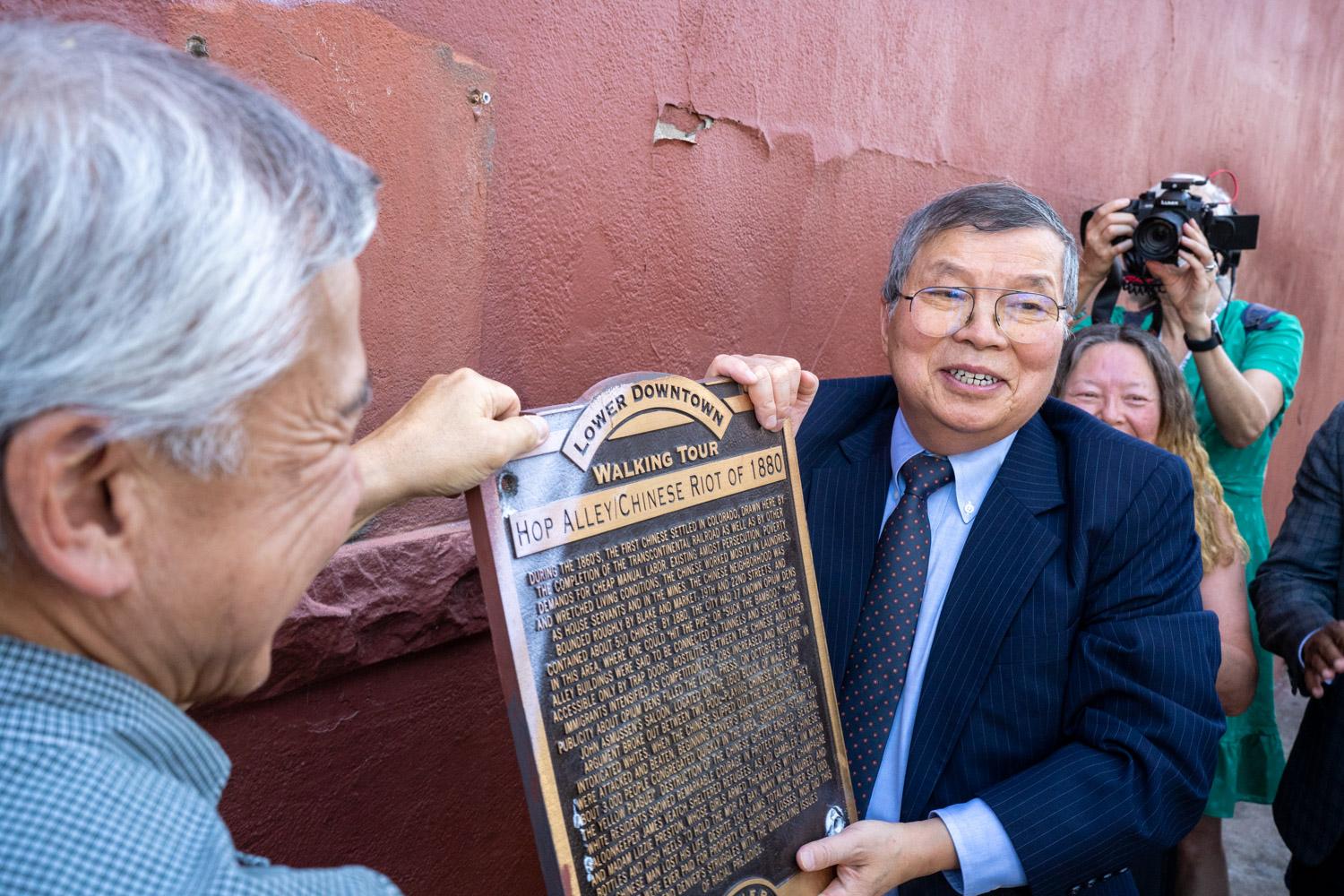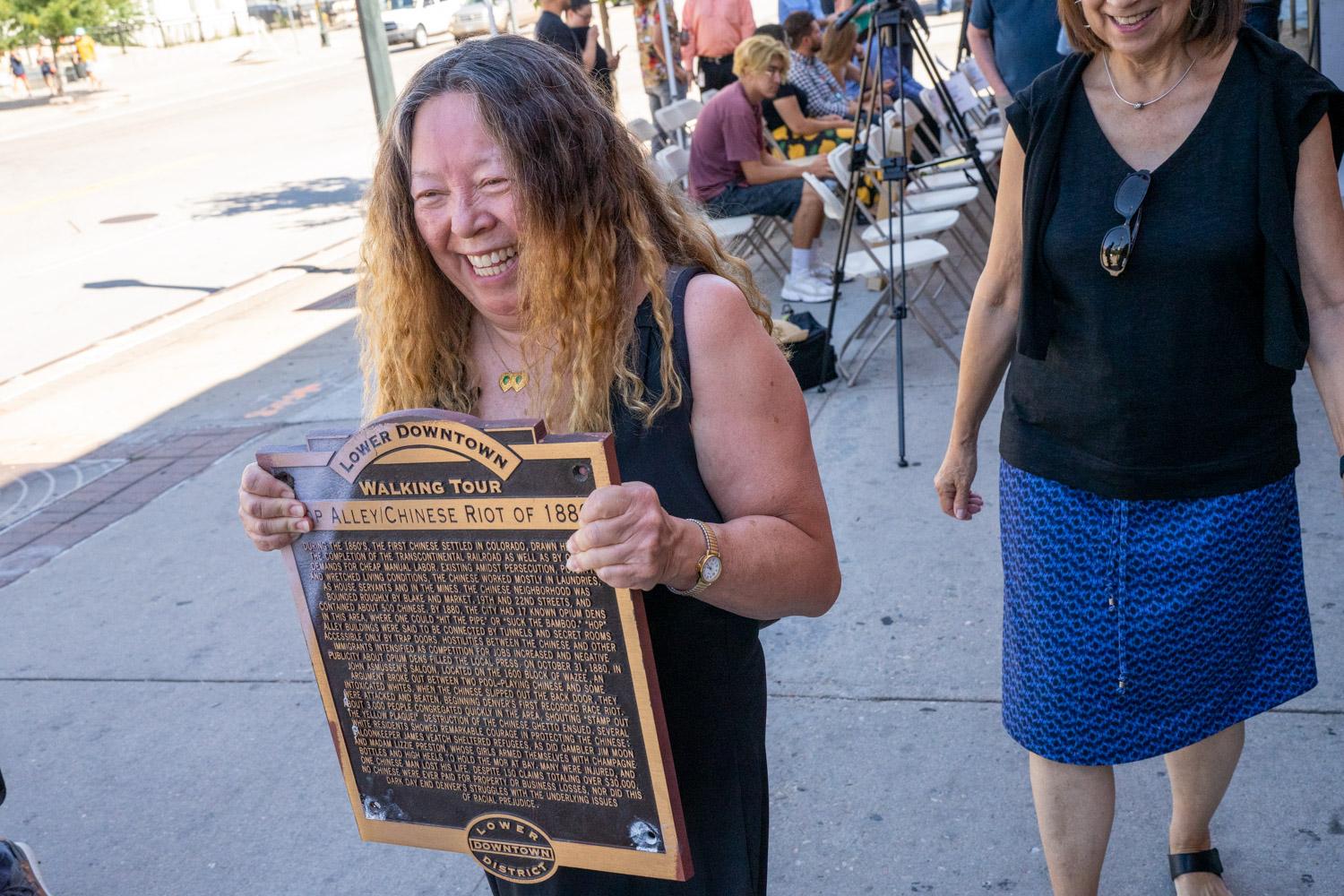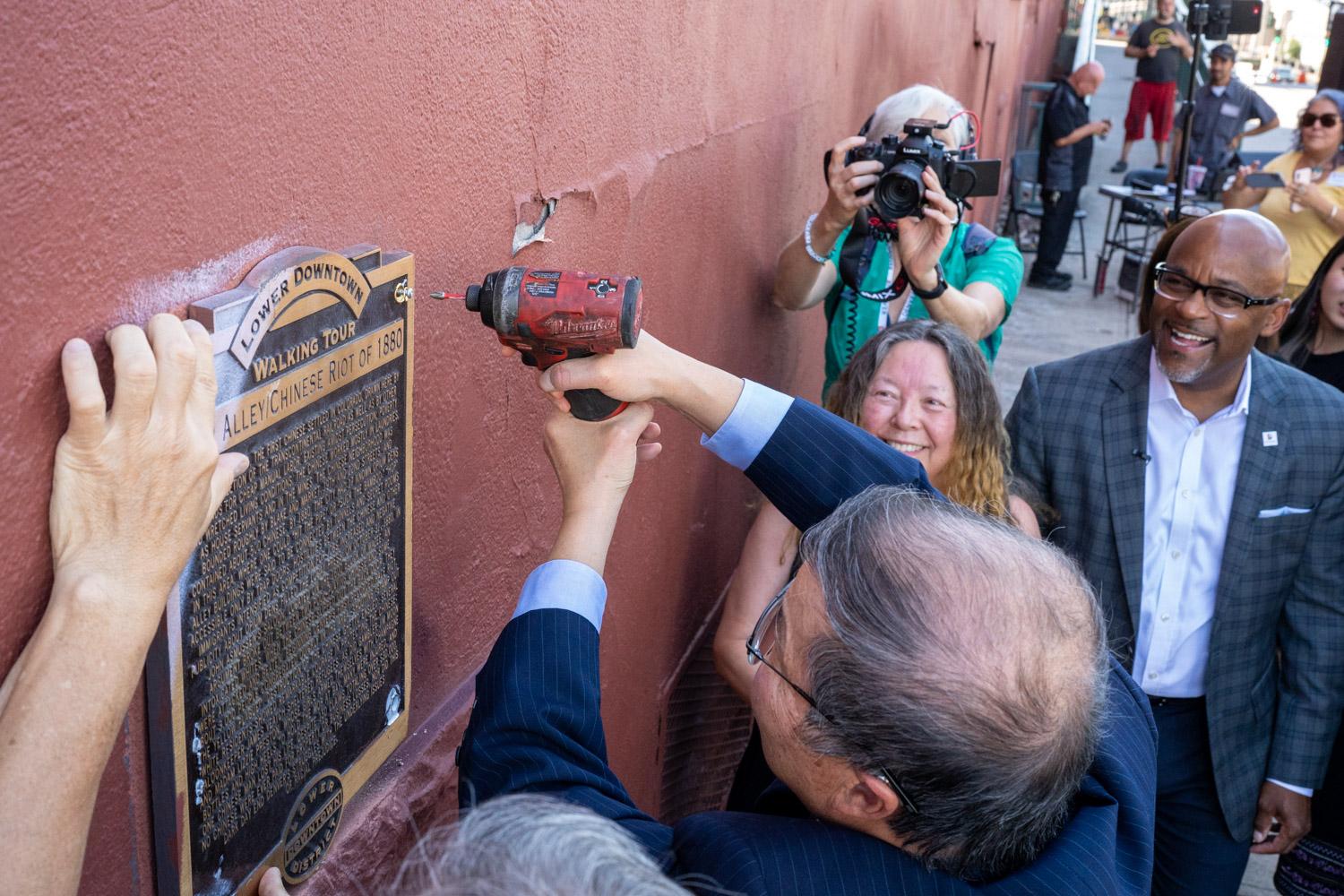Denver officials on Monday removed a downtown plaque which critics had targeted for its misrepresentation of city history. The "Hop Alley/Chinese Riot of 1880" marker's removal was the most recent step in an effort to further improve relationships between the city and its Chinese residents, which included the city's formal apology earlier this year for its role in anti-Asian violence at the time.
"For the Colorado Asian Pacific community, removing the plaque is a significant event, for it illuminates a misleading narrative about Denver's historic Chinatown that has stigmatized the Chinese people then and now," said Dr. William Wei, a board member of Colorado Asian Pacific United. "Racist relics of the past like the plaque need to be replaced with public statements that accurately represent the community and its contributions to the city of Denver and the Centennial state."
The idea to remove the marker came from the Re-Envisioning Historic Chinatown Project, started by the Denver Asian American Pacific Islander Commission, along with other organizations and Asian-American leaders in the city.
The project's goal was to shed light on the historical details and context surrounding Denver's once bustling but now destroyed Chinatown. Today, that area is considered LoDo. In the 1870s, Chinese immigrants moved to the West Coast with the hope of striking it rich in the Gold Rush, according to History Colorado. Many migrants settled in Colorado and later in LoDo because of its central location.
The riot began on Oct. 31, 1880 at John Asmussen's Saloon. An argument broke out between Chinese and white patrons. When the Chinese patrons left, they were followed and attacked. Look Young, a Chinese laundry worker, was fatally beaten during the riot.
Chinese-owned properties were also destroyed and Chinatown never fully recovered from the incident.

For advocates, the first step toward promoting more awareness of Denver's Chinatown was to replace the existing, and easily missed, plaque near 20th and Blake streets. Wei previously said the plaque tells the story of the anti-Chinese riot through the lens of white historians. For example, the plaque applauds and names several white residents "who showed remarkable courage" in assisting Chinese residents but never names Lee or the victims.
"If you read this plaque carefully, you notice that it does not actually dwell on the victims of this race riot, the Chinese," Wei previously told Colorado Public Radio. "Instead, it focuses on the heroes who came to their rescue. Let me say that I applaud the heroes who came to their aid, but it does reflect a certain attitude that persists today. The need ... to have a white savior."
The city took its first step toward rectifying its past transgressions in April when Mayor Michael B. Hancock signed a resolution officially apologizing to the descendants of Denver's Chinese immigrants for the city's role in the anti-Asian violence. He called the era "a shameful chapter in Colorado history."
With the apology, Denver became the fifth U.S. city to make a declaration like this for past anti-Asian violence and discrimination. It's the first city outside of California.

At the event Monday, Wei said Colorado Asian Pacific United plans to erect several historical markers in LoDo to further explain the riots and continue to educate Denverites on the city's historic Chinatown. He said the coalition envisions adding murals to LoDo and finally they hope to create a museum to continue telling the stories of Denver's Chinese communities.
"We've been waiting for this for a long time," said Linda Lung, whose great grandmother used to live in and own a business in Chinatown.
"The Lungs appreciate the recognition and acknowledgment of the past injustices of not only the anti-Chinese race riot but the destruction of Chinatown," she said. "But it's time to move forward. Let's take this opportunity to capture and record the true and accurate history of the Chinese and all AAPI stories to preserve and celebrate this proud and rich history for future generations."













